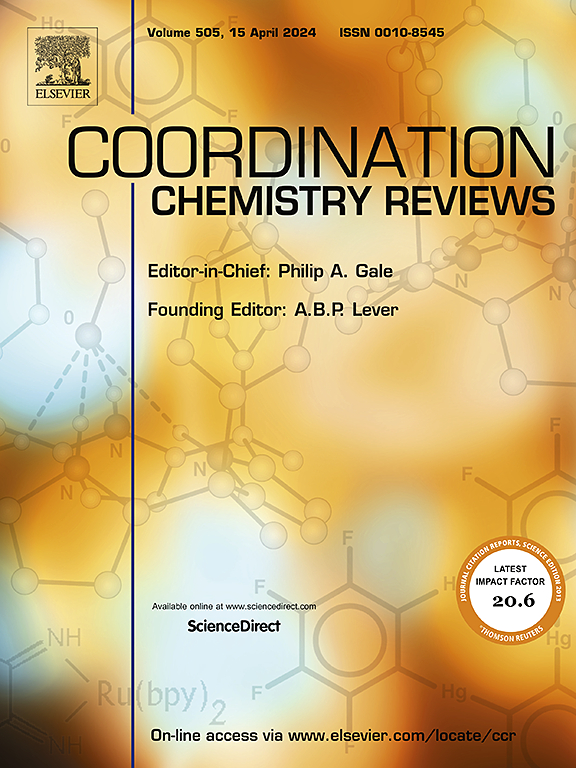mof基重金属离子吸附复合材料的合成研究进展
IF 20.3
1区 化学
Q1 CHEMISTRY, INORGANIC & NUCLEAR
引用次数: 0
摘要
随着工业化进程的加快,我国工业废水的排放量大幅增加。处理大量含有重金属的废水是一项挑战。重金属因其高毒性和抗降解性,对人类健康和各种生态系统构成重大风险。吸附法是一种快速、高效、经济的去除重金属的方法。金属有机骨架(mof)由于其高比表面积、可调节的孔径和易于修饰而成为吸附剂材料。本文综述了传统MOFs的优点和局限性,并对克服这些局限性的复合材料进行了全面的总结。此外,综述了金属氧化物、硫化物、壳聚糖和水凝胶等复合材料的最新进展,以及它们在增强吸附过程中的作用。此外,本文还讨论了每种复合材料的稳定性和关键合成步骤,并分析了它们各自的优势和挑战。分析了mof基复合材料面临的挑战,并提出了有助于提高性能和扩大废水处理应用范围的合成方法。本文章由计算机程序翻译,如有差异,请以英文原文为准。

Recent advances in the synthesis of MOF-based composites for heavy-metal ion adsorption
With rapid industrialization, the industrial wastewater discharge has increased considerably. Treating large volumes of wastewater containing heavy metals is challenging. Heavy metals pose significant risks to human health and various ecosystems owing to their high toxicity and resistance to degradation. A fast, efficient, and economical method for removing heavy metals is adsorption. Metal-organic frameworks (MOFs) have garnered significant attention as adsorbent materials owing to their high specific surface area, tunable pore size, and ease of modification. This review examines the advantages and limitations of traditional MOFs, and presents a comprehensive summary of composites developed to overcome these limitations. Further, the review highlights recent advancements in composite materials, including metal oxides, sulfides, chitosan, and hydrogels, and their role in enhancing the adsorption process. In addition, this review discusses the stability and key synthesis steps of each composite material, providing insights into their respective advantages and challenges. The challenges faced by MOF-based composites are analyzed and synthesis methods that facilitate improved performance and increased scope of application in wastewater treatment are recommended.
求助全文
通过发布文献求助,成功后即可免费获取论文全文。
去求助
来源期刊

Coordination Chemistry Reviews
化学-无机化学与核化学
CiteScore
34.30
自引率
5.30%
发文量
457
审稿时长
54 days
期刊介绍:
Coordination Chemistry Reviews offers rapid publication of review articles on current and significant topics in coordination chemistry, encompassing organometallic, supramolecular, theoretical, and bioinorganic chemistry. It also covers catalysis, materials chemistry, and metal-organic frameworks from a coordination chemistry perspective. Reviews summarize recent developments or discuss specific techniques, welcoming contributions from both established and emerging researchers.
The journal releases special issues on timely subjects, including those featuring contributions from specific regions or conferences. Occasional full-length book articles are also featured. Additionally, special volumes cover annual reviews of main group chemistry, transition metal group chemistry, and organometallic chemistry. These comprehensive reviews are vital resources for those engaged in coordination chemistry, further establishing Coordination Chemistry Reviews as a hub for insightful surveys in inorganic and physical inorganic chemistry.
 求助内容:
求助内容: 应助结果提醒方式:
应助结果提醒方式:


